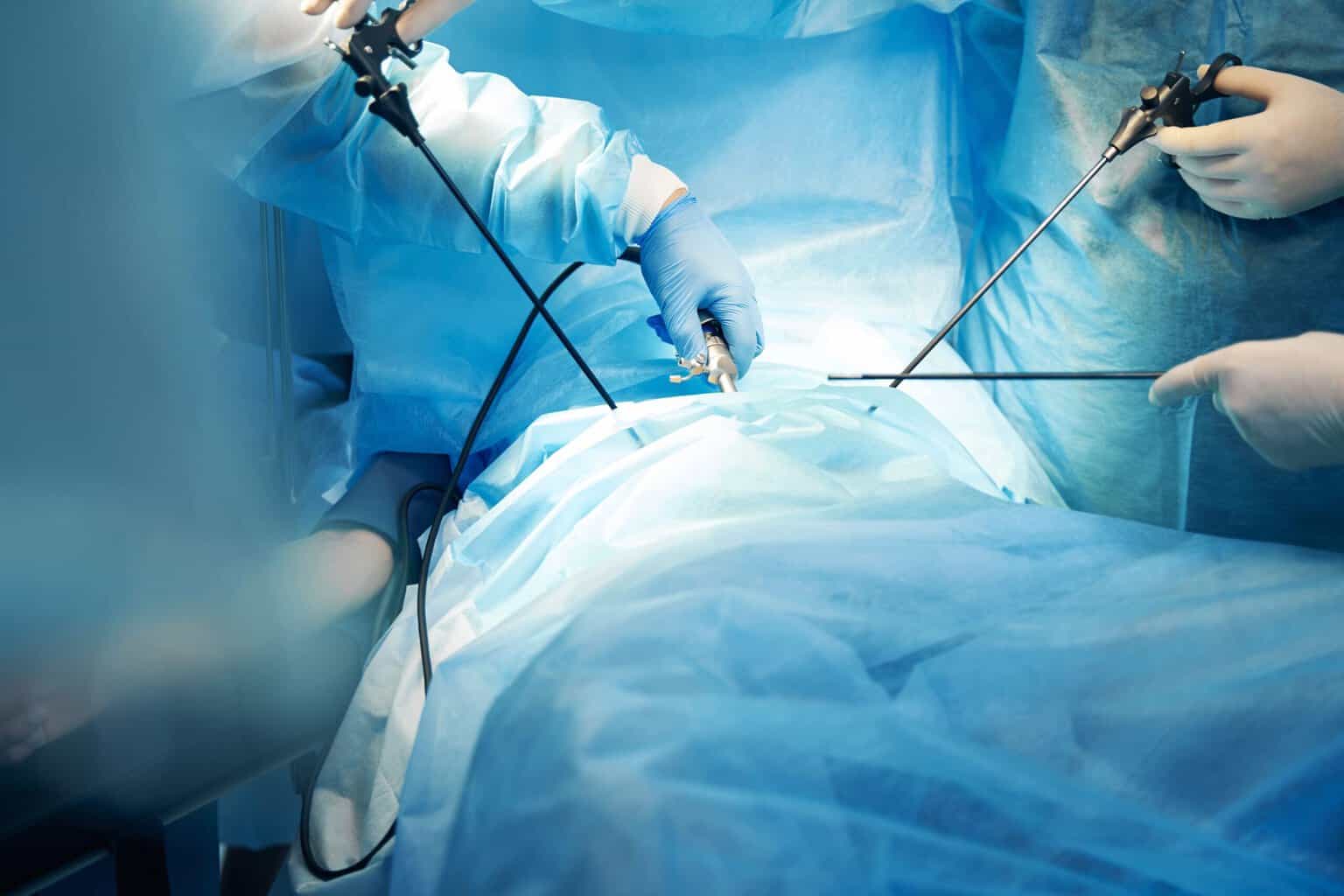A hernia represents a defect (weakness) in the front abdominal wall and the inguinal canal, allowing the protrusion of tissue or organs (most commonly from the abdominal cavity) that are not normally present in that space.
Inguinal hernia can lead to discomfort and dull pains in the groin region, typically manifesting after exertion. After a few months from the hernia’s onset, it becomes noticeable in the groin or scrotum region, after which pains usually diminish.
If not treated surgically, the hernia can lead to complications and become a life-threatening condition. Read on to find out more about why laparoscopic surgery is the best way to treat Inguinal Hernias.
What Are the Complications of Inguinal Hernias
The most common complications that can occur include:
• Incarceration—the hernia contents cannot be returned to the abdomen, leading to an increased risk of obstruction and strangulation.
• Obstruction—occurs in patients with long-standing hernias, involving the blocked passage of bowel contents through the entrapped bowel in the hernia.
• Strangulation—compromised blood supply to the bowel within the hernia, representing an emergency requiring immediate surgery.
Diagnosis
In most cases, an inguinal hernia can be diagnosed through a physical examination. In rare and unclear situations, an ultrasound examination of the inguinal region or a CT scan may be necessary.
Surgical Treatment of Inguinal Hernias
Classic surgery commonly used today for inguinal hernia resolution is based on the Lichtenstein technique, involving the use of prosthetic material (mesh).
With the development of minimally invasive surgery, three basic techniques have emerged depending on the approach to the inguinal canal and the location for positioning the mesh:
- Transabdominal Preperitoneal Approach—TAPP
- Intraperitoneal Onlay Mesh—IPOM
- Totally Extraperitoneal Approach—TEP

What are the advantages of minimally invasive surgery?
Laparoscopy is a technique for accessing the abdominal cavity through small incisions in the abdominal wall, ranging in size from 5 to 12mm. Through specially created working channels (ports) and with the help of elegant instruments and a camera with magnification ranging from 5 to 10 times, we can access every part of the abdominal cavity and chest, adequately identify and address the issue. These small incisions, compared to traditional surgeries, offer the possibility of rapid recovery, reduce the risk of infection, enabling a return to regular activities within a few days. The advantage of the magnifying camera minimizes the possibility of errors in experienced hands to a minimum, leading to the observation of the tiniest details during the procedure.
Techniques of minimally invasive hernia repair
The most commonly performed surgeries for addressing inguinal hernias are the TAPP and TEP techniques, which have slight differences.

Transabdominal preperitoneal approach (TAPP)
During the transabdominal preperitoneal approach (TAPP), a camera is used to enter the abdominal cavity. On the anterior abdominal wall, not only inguinal hernias but also hernias on the diaphragm, as well as all other hernias of the anterior and lateral parts of the abdominal wall, can be identified. In the desired region, the contents from the abdomen can be returned to the appropriate position, after which the mesh is positioned and fixed in a previously carefully prepared region. A particular advantage of this technique lies in the ability to examine the entire abdominal cavity and identify other pathological conditions or diseases in the abdomen.
Extraperitoneal approach (TEP)
During the extraperitoneal approach (TEP), we immediately access the region of interest without disrupting the inner lining of the abdomen. The entire operation using this approach is performed within the abdominal wall, completely without the possibility of adhesion formation inside the abdomen. This approach is particularly suitable for young and highly active recreational or professional athletes. Return to regular activities with this technique is possible within 24-48 hours, while full-capacity active training is recommended after 4 to 5 days.
Intraperitoneal approach (IPOM)
The intraperitoneal approach (IPOM) is used for all hernias of the anterior abdominal wall, whether primary or occurring after a previous operation. This technique allows simultaneous repair and strengthening of multiple weak points in the abdominal wall using special large-sized meshes. Like other minimally invasive procedures, the recovery after the intervention takes only a few days.
